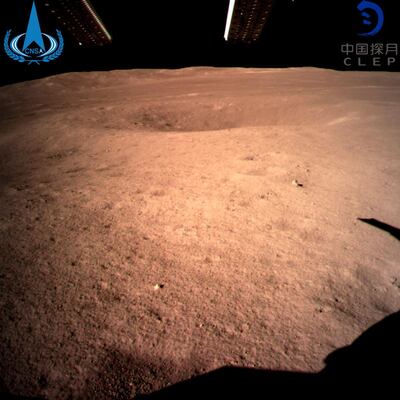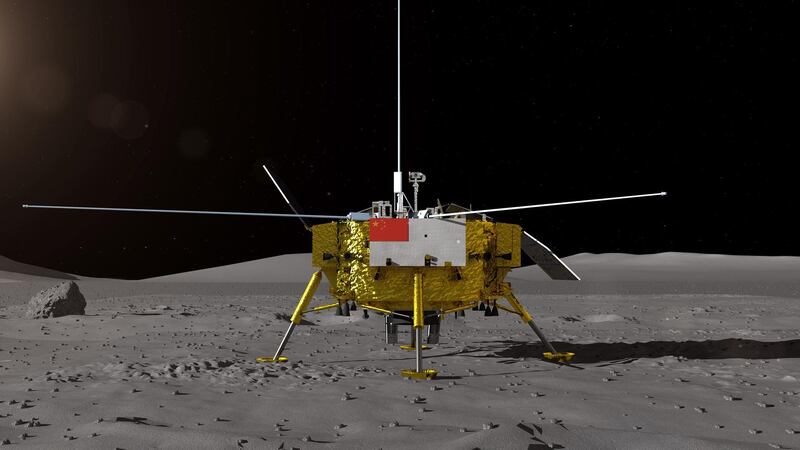A Chinese space probe successfully landed on the far side of the Moon on Thursday.
China’s state media hailed it as a historic first and an important step for the country’s space programme.
State television said the Chang’e-4 lunar probe, launched in December, made the “soft landing” at 2.26am GMT and transmitted the first “close range” image of the dark side of the Moon.
The Moon is tidally locked to Earth, rotating at the same rate that it orbits our planet, so the far side – or the “dark side” – is never visible from Earth. Previous spacecraft have seen the far side of the Moon but none have landed on it.
Thursday’s landing “lifted the mysterious veil” from the far side of the Moon and “opened a new chapter in human lunar exploration”, the Chinese broadcaster said.
The probe, which includes a lander and a rover, touched down at a preselected landing area, the state-run Xinhua news agency reported. The probe had been in lunar orbit since mid-December.

Xinhua posted a wide-angle colour picture of a crater from the Moon’s surface.
Chang’e-4’s tasks include astronomical observation, surveying the Moon’s terrain, landform and mineral composition, and measuring the neutron radiation and neutral atoms to study the environment on the far side of the Moon, the China National Space Administration said.
China wants to catch up with Russia and the US and become a major space power by 2030. It is planning to begin building its own manned space station next year.
But while China has insisted its ambitions are peaceful, the US Defence Department has accused it of pursuing activities aimed at preventing other nations from using space-based assets during a crisis.
______________
Read more:
Opinion: How the next space race will be spurred by the Gulf countries
Nasa's New Horizons landmark flyby of an icy distant world is no New Year's Day stunt
Nasa spacecraft survives risky encounter with faraway world
______________
Apart from its civilian ambitions, the Chinese government has tested anti-satellite missiles and the US Congress has banned Nasa from co-operating with its Beijing counterpart because of security concerns.
The US is so far the only country to have put human beings on the Moon. US President Donald Trump said in 2017 he wanted to return American astronauts to the lunar surface and set up a foundation there for an eventual mission to Mars.
In 2003, China became the third country to put a man in space with its own rocket – after the former Soviet Union and the US – and in 2013 it completed its first lunar soft landing.





